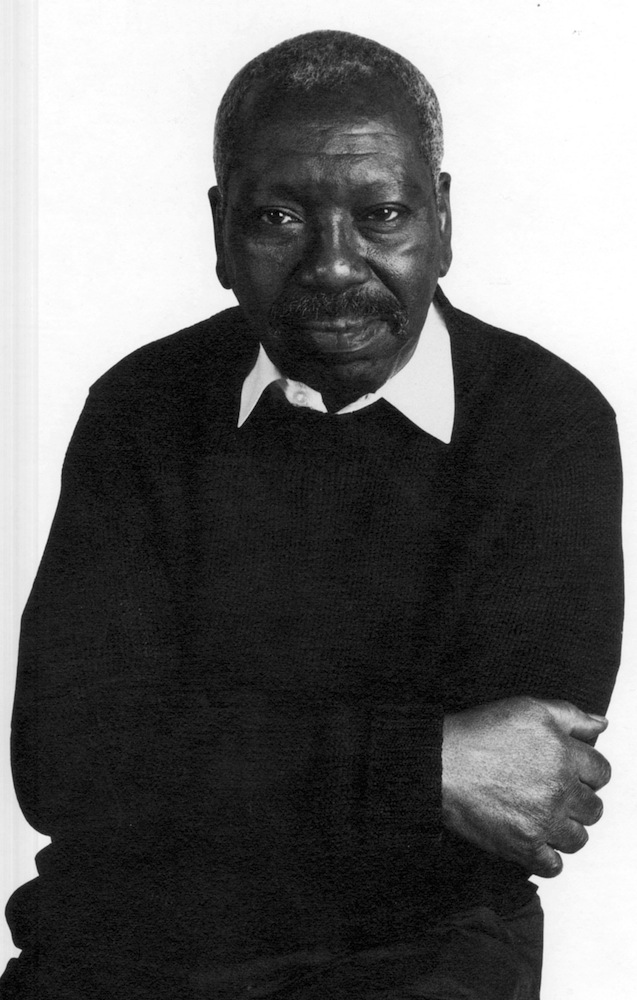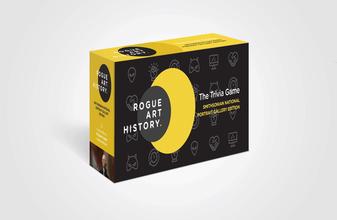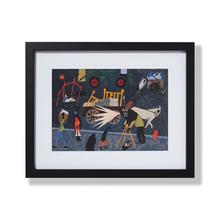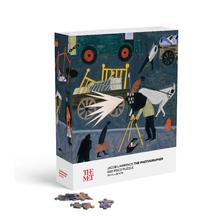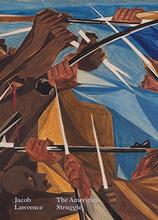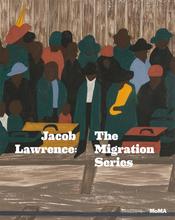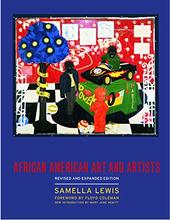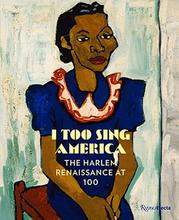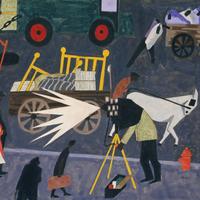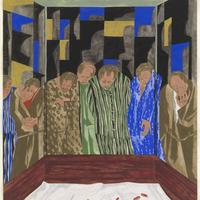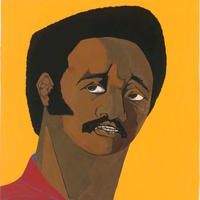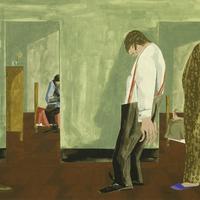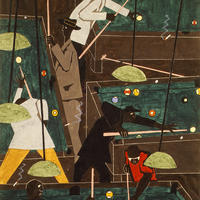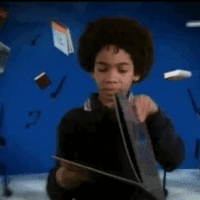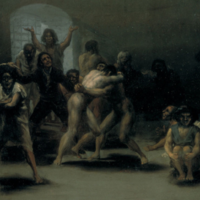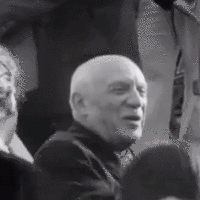More about Jacob Lawrence
- All
- Info
- Shop

Contributor
Jacob Lawrence depicts prominent moments in African-American history.
It hadn’t seemed so promising for Lawrence as he dropped out of high school at 16 years old. Lawrence bucked the odds and, later in life, he was asked to create murals for the Munich Olympic Games in 1972 and Bicentennial in 1976, covers for Time magazine, and he landed a 15-year teaching gig at the University of Washington.
For one of his first teaching jobs, he was invited to an art college in North Carolina. Instead of asking Lawrence to switch to a segregated “colored” car after crossing the Mason-Dixon line into the south, his friend Josef Albers arranged for a private train car. Lawrence rode like royalty into the segregated south.
Then, in World War II, he served with the first racially integrated U.S. Coast Guard crew. During the war, he created 17 paintings of the crew and their experiences. The Coast Guard exhibited them around the country until 1946 when all but one mysteriously disappeared in an undocumented art heist.
Whether actually stolen, destroyed or simply lost, when the paintings went missing, it wasn’t even seen as an unusual occurrence during the period after the war. Because the military was demobilizing and discharge orders came through each week, valuable and unusual government property often found itself discharged “accidentally” with the soldiers who had been in charge of it.
Luckily, Lawrence was undeterred and became a busy-bee painter. He produced many series of work that were made up as many as 60 paintings each.
Featured Content
Here is what Wikipedia says about Jacob Lawrence
Jacob Armstead Lawrence (September 7, 1917 – June 9, 2000) was an American painter known for his portrayal of African-American historical subjects and contemporary life. Lawrence referred to his style as "dynamic cubism," an art form popularized in Europe which drew great inspiration from West African and Meso-American art. For his compositions, Lawrence found inspiration in everyday life in Harlem. He brought the African-American experience to life using blacks and browns juxtaposed with vivid colors. He also taught and spent 16 years as a professor at the University of Washington.
Lawrence is among the best known twentieth-century African-American painters, known for his modernist illustrations of everyday life as well as narratives of African-American history and historical figures. At the age of 23 he gained national recognition with his 60-panel The Migration Series, which depicted the Great Migration of African Americans from the rural South to the urban North. The series was purchased jointly by the Phillips Collection in Washington, D.C., and the Museum of Modern Art (MoMA) in New York. Lawrence's works are in the permanent collections of numerous museums, including the Philadelphia Museum of Art, the Whitney Museum, Metropolitan Museum of Art, the Brooklyn Museum, the Virginia Museum of Fine Arts, Reynolda House Museum of American Art, and the Museum of Northwest Art. His 1947 painting The Builders hangs in the White House.
Check out the full Wikipedia article about Jacob Lawrence

